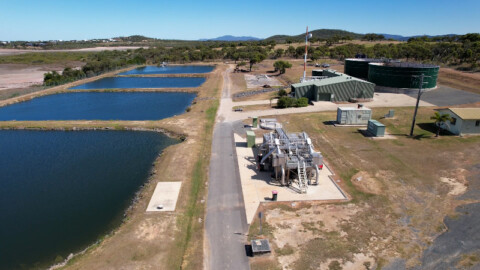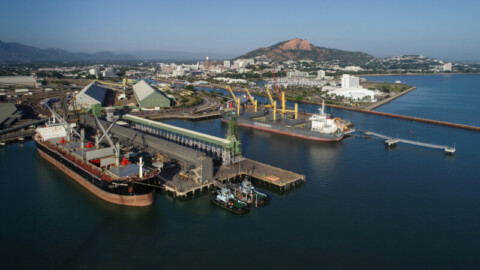Naturally occurring groundwater in Bendigo’s historic gold mines has been rising and threatening water quality and surrounding infrastructure for many years – but there are solutions. The Department of Environment, Land, Water and Planning (DELWP) recently contracted the Bendigo Trust to dewater the mines until a permanent solution is found.
In early 2015, groundwater from historic mines in Bendigo, north west of Victoria, began causing odours along Bendigo Creek, impacting local water quality and resulting in small surface discharges.
That is why Bendigo Trust, the operators of the Central Deborah Tourist Mine, have been contracted to pump the groundwater out of the mines. This mine dewatering aims to stop the levels getting too close to the ground surface and contaminating local waterways.
Due to the region’s geology, the water from the mine voids (the excavation area that remains after mine rehabilitation) contains increased salinity, arsenic, hydrogen sulphide (causing a ‘rotten egg’ smell) and other heavy metals.
The poor quality of the water has the potential to impact infrastructure such as underground utilities, road and building foundations, as well as cause soil salinisation.
The immediate solution to this problem involved pumping the groundwater from the Central Deborah tourist mine to the New Chum line of workings via the Eureka shaft, but this work was stopped in late February 2016 due to the pending transfer of mining and exploration licences for the Bendigo gold fields.
Then, from early March, groundwater was pumped to the Garden Gully line to ensure the Bendigo Trust could continue their business without disruption.
In May, the Victorian Government approved the transfer of mining licences in Bendigo from Unity Mining to Kralcopic.
The transfer of the mining licences enabled DELWP to enter into negotiations with Kralcopic to resume pumping the groundwater from the Central Deborah shaft to the New Chum line via the Eureka shaft, and pumping resumed in June 2016.
A challenging environment
 Contractors Bendigo Trust pumped the groundwater using Grundfos SP 9520 pumps. Two pumps were installed to provide redundancy in the project and to allow pumping at a higher than normal rate when required.
Contractors Bendigo Trust pumped the groundwater using Grundfos SP 9520 pumps. Two pumps were installed to provide redundancy in the project and to allow pumping at a higher than normal rate when required.
These fully submersible pumps consisted of a 95kw pump motor and 20 pump stages in the wet end.
The submersible pumps were chosen because they met the specific technical requirements of pumping the groundwater, which was a head pressure in excess of 260 metres and a required maximum volume of two M/L per day, per pump.
Besides the technical requirements, the pumps were also chosen based on the constraints of the project, which included the short lead time Bendigo Trust had to get the system installed, as well as the ease of acquiring spare pumps and parts, the cost, and the reliability of the pump units.
Even with all this in mind, there were still major challenges involved in installing these large pumps into the confines of the mine shafts.
At the Central Deborah mine, there were difficulties regarding the installation and maintenance of the pumping infrastructure so very specialised engineering solutions had to be devised to allow for installation into the timber mine shaft, which was located approximately 260 metres below the surface.
Since there was no access for heavy machinery or heavy lifting equipment, most of the preparation and installation work relied heavily on devising oneoff solutions and using equipment such as handheld jack hammers to carry out excavations in the rock and allow installation of the necessary components.
Transitional solution
 DELWP has since been searching for a backup pumping point to divert the groundwater from the mines, with one potential short-term solution involving uncapping the former Specimen Hill mine shaft in Eaglehawk.
DELWP has since been searching for a backup pumping point to divert the groundwater from the mines, with one potential short-term solution involving uncapping the former Specimen Hill mine shaft in Eaglehawk.
DELWP investigated the old shaft at Specimen Hill to see if it would be a suitable extraction point for pumping the groundwater from Bendigo’s disused mine shafts to Coliban Water’s Reclamation Plant at Epsom for treatment.
While there is no immediate threat from the contaminated water, the uncapping works of Specimen Hill mine were undertaken to identify viable options to divert the groundwater while the transition option is in place.
This transitional solution with the Epsom plant involves implementing processes and infrastructure that could then be used within the permanent solution, once one is found.
The uncapping of Specimen Hill involved drilling a 300 millimetre diameter hole into the concrete shaft cap and assessing the shaft condition.
After the assessment, Bendigo Trust submitted a report to DELWP on the mine’s suitability to be used as part of the transitional solution, but unfortunately the report showed the mine had collapsed timbers and backfill creating a ‘choke’ in the shaft. Removal of the choke would require considerable effort and cost.
Taking these factors into account, planning is now under way to see if the Suffolk and Argus mines would be more suitable sites to pump the groundwater.
The 2016-17 Victorian Budget includes a further $14 million of funding to enable implementation of this transitional plan, based on the pumping and treatment of groundwater at the Epsom Treatment Plant.
DELWP is also working closely with the community and local government to develop future options for Bendigo’s rising groundwater problem.
















